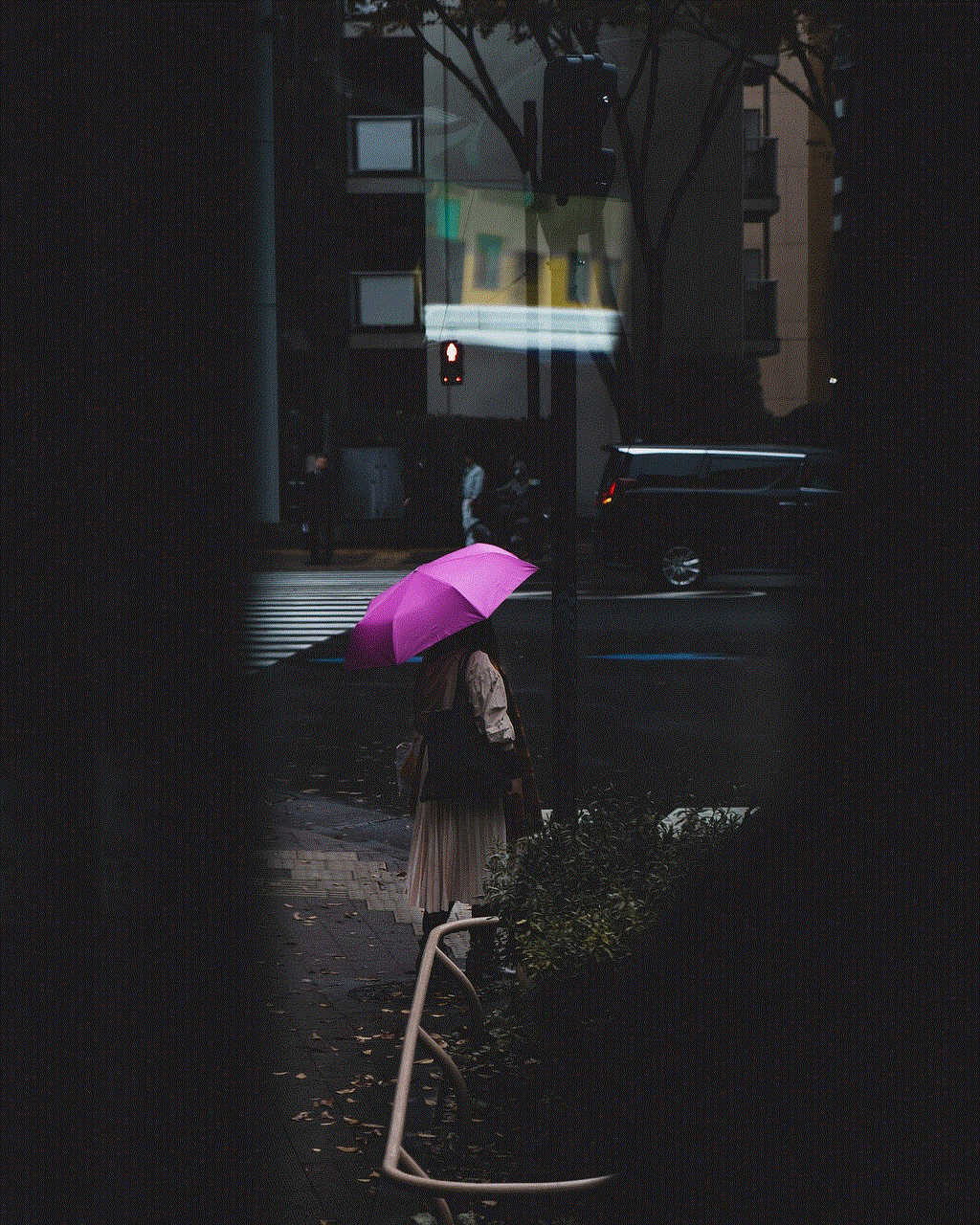phone gps tracker by number
In today’s fast-paced world, technology has become an integral part of our lives. From smartphones to laptops, we rely on these devices for almost every aspect of our daily routines. One such technological advancement that has gained immense popularity in recent years is the GPS tracker. It has revolutionized the way we navigate and keep track of our belongings, including our loved ones. With the emergence of phone GPS trackers by number, we can now locate any person or object with just a few clicks. In this article, we will delve deeper into the concept of phone GPS tracking by number and explore its various applications and benefits.
What is a phone GPS tracker by number?
A phone GPS tracker by number is a software or application that uses the Global Positioning System (GPS) to determine the exact location of a mobile device. It works by sending signals to a network of satellites orbiting the Earth, which then transmit the location data back to the device. The user can enter the phone number of the device they want to track, and the GPS tracker will provide real-time updates of its location.
Applications of phone GPS tracker by number:
1. Personal tracking:
One of the most common applications of phone GPS trackers by number is for personal tracking. Parents can use this technology to keep an eye on their children’s whereabouts and ensure their safety. In case of an emergency, they can quickly locate their child’s phone and rush to their aid. Similarly, elderly family members with medical conditions can also be tracked to ensure their well-being.
2. Vehicle tracking:
Another prevalent use of phone GPS trackers by number is for tracking vehicles. Companies can install these trackers in their fleet of vehicles to monitor their movements and ensure timely deliveries. In case of theft or unauthorized usage, the tracker can provide valuable information to the authorities for recovery. It can also help in optimizing routes and reducing fuel consumption.
3. Asset tracking:
Businesses can track their valuable assets, such as expensive equipment and machinery, using phone GPS trackers by number. This can help prevent theft or misuse and provide real-time updates on the asset’s location. It can also help in managing inventory and keeping track of shipments during transportation.
4. Pet tracking:
Losing a pet can be a traumatic experience for pet owners. With phone GPS trackers by number, they can keep track of their pet’s location and be alerted if they stray too far. It can be a lifesaver for pets with a tendency to wander off or during natural disasters when they may get lost.
5. Emergency services:
Phone GPS trackers by number can also be used by emergency services to locate individuals in distress. In case of accidents or natural disasters, the authorities can track the location of the affected person and provide prompt assistance. It can also help in locating lost hikers or travelers in remote areas.
Benefits of phone GPS tracker by number:
1. Real-time tracking:
Phone GPS trackers by number provide real-time updates of the device’s location, making it easier to track the movement of people or objects. This feature can prove to be crucial in case of emergencies or when tracking valuable assets.
2. Easy to use:
These trackers are user-friendly and require minimal technical knowledge to operate. Users can simply enter the phone number of the device they want to track, and the tracker will do the rest.
3. Cost-effective:
Compared to other tracking solutions, phone GPS trackers by number are relatively affordable. Users do not have to invest in expensive hardware or software, making it a cost-effective option for personal or business use.
4. Multiple device tracking:
Some phone GPS trackers by number allow users to track multiple devices simultaneously. This can be useful for businesses that need to monitor their fleet of vehicles or assets.
5. Geofencing:
Geofencing is a feature offered by some phone GPS trackers by number, which allows users to set virtual boundaries for the device. If the device crosses these boundaries, the user will be notified, making it an efficient way to track the movement of individuals or objects.
6. Privacy protection:
Phone GPS trackers by number offer privacy protection by allowing the user to restrict access to their location data. They can choose who can track their device and for how long, ensuring their safety and privacy.
7. Offline tracking:
Some phone GPS trackers by number can also work offline, making it possible to track devices even in areas with no cellular network coverage. This feature can be useful in remote locations or during natural disasters when communication networks may be disrupted.



8. Customizable alerts:
Users can set up customizable alerts on their phone GPS trackers by number, such as speed alerts, low battery alerts, or geofence alerts. This can help in monitoring the movement of individuals or objects and take prompt action in case of any unusual activity.
9. Historical data:
Phone GPS trackers by number can store the location data of the device for a specific period, allowing users to access the device’s movement history. It can be useful for businesses to analyze their fleet’s performance or for parents to keep track of their child’s whereabouts.
10. Increased safety and security:
Perhaps the most significant benefit of phone GPS trackers by number is the increased safety and security they provide. It can help locate lost or stolen devices, prevent unauthorized usage, and provide timely assistance during emergencies.
Conclusion:
Phone GPS trackers by number have become an essential tool in today’s world, providing a wide range of benefits and applications. From personal tracking to vehicle and asset tracking, this technology has proven to be a game-changer in various industries. With its user-friendly interface, cost-effectiveness, and real-time tracking, phone GPS trackers by number have become a popular choice for individuals and businesses alike. As technology continues to advance, we can expect to see more innovations in this field, making our lives easier and safer.
cake slang meaning
The term “cake” is a slang word that has been used for many years to describe a variety of things. It can refer to a delicious baked dessert, a layer of makeup, or even a person who is considered attractive. In today’s society, the word has taken on a new meaning and has become a popular term used by younger generations. In this article, we will explore the various meanings and origins of “cake” as a slang term and how it has evolved over time.
The most common meaning of “cake” is used to describe a delicious baked dessert that is typically made with flour, sugar, eggs, and butter. This sweet treat has been a staple in many cultures for centuries and has evolved into a variety of different forms and flavors. However, in the early 2000s, the term “cake” began to take on a new meaning among a younger generation. It became a term used to describe something that is desirable, attractive, or even enviable.
One of the earliest documented uses of “cake” as a slang term was in the 1980s in the hip hop community. Rappers and artists began using the term to describe a woman who was considered attractive and had a desirable body. This usage of the word can be seen in popular songs such as LL Cool J’s “Big Ole Butt” and NWA’s “Express Yourself.” The term was also used in the 1990s by the group Naughty by Nature in their song “O.P.P.” where they refer to women as “cake.”
As the term gained popularity in the hip hop community, it began to spread to other social circles and became a more mainstream term. By the early 2000s, “cake” was being used by teenagers and young adults to describe anything or anyone that was desirable or enviable. This could include expensive clothing, a fancy car, or even a person who was popular or well-liked.
One of the reasons for the popularity of “cake” as a slang term is its versatility. It can be used to describe a variety of things, making it a convenient term to use in everyday conversation. For example, if someone sees a person wearing expensive designer clothing or driving a luxurious car, they might say, “Wow, that outfit/car is cake.” This usage of the term is similar to the phrase “a piece of cake” which means something is easy or effortless.
Another popular usage of “cake” as a slang term is in the makeup community. The term is used to describe a thick layer of makeup, particularly on the face. This usage of the word can be traced back to the early 2000s when the trend of wearing heavy makeup, also known as “cake face,” became popular among young women. This trend was popularized by celebrities and influencers, and the term “cake” was used to describe the amount of makeup they were wearing.
The term “cake” has also made its way into the meme culture, where it is used to describe something that is over-the-top or excessive. This usage of the word is often seen on social media platforms such as Twitter , Instagram , and tiktok -parental-control-effectively-in-2023″>TikTok . For example, someone might post a photo of a large stack of pancakes with the caption, “That’s a lot of cake for one person.” This usage of the term is often meant to be humorous and is not to be taken literally.



In addition to its various meanings, “cake” has also evolved into different forms and variations over the years. One popular variation is “cakey,” which is used to describe something that is excessively thick or heavy. This can refer to anything from makeup to food to a person’s personality. For example, someone might say, “Her foundation is looking a bit cakey today,” or “That guy’s attitude is a little too cakey for me.”
Another variation of “cake” is “cake boss,” which is used to describe someone who is in charge or has a high level of authority. This term was popularized by the reality TV show “Cake Boss” which aired from 2009 to 2017 and followed the life of Buddy Valastro, the owner of Carlo’s Bakery. The term is often used in a humorous or ironic way to describe someone who is not actually a boss, but acts like one.
There is also a newer variation of “cake” called “caking,” which is used to describe someone who is flirting or showing interest in someone else. This usage of the term is often seen in social settings, such as parties or clubs, where people are trying to attract someone’s attention. For example, someone might say, “He was really caking on that girl last night.”
While “cake” is primarily used as a slang term, it has also made its way into popular culture and has been used in movies, TV shows, and even as the name of a popular game show. In 2012, the movie “Project X” featured a character named Costa who constantly used the term “cake” to describe anything that was cool or desirable. In 2011, a game show called “Cake Boss: The Game” was released for the iPhone, iPad, and iPod touch, which allowed players to run their own virtual bakery.
In conclusion, the slang term “cake” has evolved over time and has taken on various meanings and uses. What started as a term to describe an attractive woman in the hip hop community has now become a versatile term used to describe anything that is desirable, attractive, or excessive. Its popularity has spread across different social circles and has even made its way into popular culture. It will be interesting to see how the term continues to evolve and be used in the future.
what does sos stand for in morse code
SOS, also known as “Save Our Souls” or “Save Our Ship”, is a universal distress signal used in Morse code. It is a combination of three dots, three dashes, and three dots, and is recognized globally as a call for help. The origin of this signal dates back to the early 20th century, and it has since become an essential part of emergency communication. In this article, we will take a closer look at the history and significance of SOS in Morse code.
Morse code is a method of transmitting information using a series of short and long signals, known as dots and dashes, respectively. It was developed by Samuel Morse in the 1830s and was primarily used for long-distance communication through telegraph lines. However, with the advancement of technology, Morse code has now been replaced by more modern means of communication. Despite this, it remains a crucial tool in emergency situations, and SOS is one of its most well-known signals.
The history of SOS in Morse code can be traced back to the early 1900s when it was first adopted as the universal distress signal. Before this, different countries had their own distress signals, which caused confusion and delays in rescue operations. In 1906, the International Radiotelegraphic Convention was held in Berlin, where delegates from various countries agreed to adopt a single distress signal that could be understood by all. After much discussion, SOS was chosen as the standard distress signal, primarily because of its simplicity and ease of use.
The origin of SOS itself is quite interesting. Contrary to popular belief, it does not stand for “Save Our Souls” or “Save Our Ship.” In fact, it doesn’t stand for anything at all. It is simply a combination of three dots, three dashes, and three dots, which are easy to recognize and remember in Morse code. This sequence of signals was chosen because it was less likely to be triggered accidentally, unlike other distress signals that were commonly used at the time, such as CQD (Come Quick, Danger). SOS was also easier to transmit and decode, even by those who were not familiar with Morse code.
One of the earliest recorded uses of SOS was in 1909 when the SS Arapahoe, an American cargo ship, ran into trouble in the Atlantic Ocean. The ship was damaged and was taking on water, and the crew had to abandon it. They used the newly adopted SOS signal to call for help, and it was successfully received by a nearby ship, the RMS Republic. This incident proved the effectiveness of the new distress signal and further solidified its adoption as the universal distress call.
In the years that followed, SOS became the standard distress signal used in maritime and aviation emergencies. It was also used in other forms of communication, such as radio and telegraph, and was recognized by all countries as a call for help. During World War II, SOS was used extensively by both sides to signal distress, and it played a crucial role in saving the lives of many soldiers and civilians.
Despite the development of new communication technologies, SOS remains an important part of emergency communication. It is still used in maritime and aviation emergencies, and it is also recognized by search and rescue teams on the ground. In addition, SOS is used in distress beacons, which are devices that transmit the signal in Morse code, allowing rescuers to pinpoint the location of the distress call.
Over the years, SOS has become more than just a distress signal. It has been used in popular culture, appearing in books, movies, and songs. It has also been used as a symbol of hope and survival, with people getting tattoos and wearing jewelry with the SOS signal. In times of crisis and disasters, SOS has been used as a rallying cry, bringing people together and reminding them of the importance of helping one another.
Some critics argue that SOS is an outdated signal and should be replaced with more modern distress signals. However, this argument fails to recognize the significance and symbolism behind SOS. It is a signal that has stood the test of time and has proven to be effective in countless emergency situations. It is also a signal that is easily recognizable by people of all ages and backgrounds, making it a valuable tool in times of distress.



In conclusion, SOS in Morse code is a universal distress signal that has a rich history and significance. It was adopted in the early 20th century as a standard distress signal and has since become an important part of emergency communication. Its simplicity and effectiveness have made it a crucial tool in saving lives, and it continues to be used in modern times. SOS is more than just a signal; it is a symbol of hope, survival, and unity. So the next time you hear those three dots, three dashes, and three dots, remember the history and significance of SOS in Morse code.